Silent Era Home Page > Home Video > Les vampires

Reviews of silent film releases on home video.
Copyright © 1999-2025 by Carl Bennett
and the Silent Era Company.
All Rights Reserved. |
|
Les vampires
(1915-1916)
|
Louis Feuillade (pronounced ‘foo-yawd’) began working in films in 1905 for Gaumont’s main studio in France. In 1907, when Alice Guy the world’s first female film director left the company, Feuillade became responsible for Gaumont’s creative output. Over the next ten years, he wrote, directed and supervised hundreds of films, from comic shorts to dramatic features. When his serial thriller of 1915 and 1916, Les Vampires (pronounced ‘lay vam-peer’), was produced, Feuillade had long since matured as a filmmaker and the European film industry had confidently and irreversably embraced feature film production.
Feuillade began making feature films in 1913. By then European filmmakers were aware of the serial film form, as well. Along with the regular Gaumont output, Feuillade began making serials which soon lengthened to episodes of feature length. The serial was born of the seed of the film thriller. Soon, filmmakers were exploring and developing the fantastic crime thriller, wherein a master criminal of greater than Moriarty proportions wreaked havoc and confounded master detectives and the always-clueless police. Louis Feuillade may not have been the cinematic originator of the master criminal genre, for that distinction may belong to the Italian producers of Tigris (1913), but he may have developed some of its enduring cinematic conventions. In Les vampires we can see both some of the already well-established clichés of the genre and some of the embryonic concepts that would still thrill serials audiences decades later.
As groundbreaking as Les Vampires might have been in 1915-1916, some aspects of the production both age the film and undermine its dramatic impact for modern audiences. While Les Vampires was a major European film studio production, it was shot quickly and inexpensively as is evidenced by the utilization of painted flats for doors in the film’s sets. And whether the budget made it necessary or not, it is almost comical that the tinest of guns are used in the film as props. The off-the-cuff method of writing the story and the improvisational direction of the action are many times transparent to the viewer, who becomes aware that not only are the crimefighters and criminals groping for answers within the narrative, the filmmaker is occasionally himself lost. Also, the actor Marcel Lévesque as the sidekick Mazamette is allowed to play directly to the camera for comic effect much of the time, letting the audiences know that they and the filmmakers aren’t to take the proceedings too seriously.
However, the serial still plays well overall to modern audiences. The narrative is fun and the action is at times thrilling. A criminal gang named the Vampires are committing a bewildering series of both large and small crimes in France. An investigative reporter is working to uncover the secrets of the miscreants, and soon accepts the help of a former Vampire member. Our heroes are nearly killed more than once and are a moment too late to catch the criminals on a number of occasions. To give the serial some spooky atmosphere, Feuillade concocted a number of striking cinematic images that remain in one's memory.
Les Vampires is not composed of a consistent string of two-reel chapters as were many of the American serials being produced at the time. The length of the ten episodes of Les Vampires ranges here from 13 to 57 minutes. While the earlier episodes average a length of 30 minutes, the latter episodes push close to feature-film length. The practice might have been new in 1916, but soon feature-length serial episodes would become a European standard, particularly in Germany.
Suffice to say that no crime serial can end until the super criminals are all captured or destroyed. While the outcome is no surprise, the thrills that are presented along the way are the payoff for fans of the genre, and to this end Les vampires does not disappoint. Despite the fact that the serial has not survived in the best of prints, the film is still available to be enjoyed for many years to come. We suggest you organize a Les Vampires festival among family and friends and enjoy this vintage serial classic.
— Carl Bennett
|
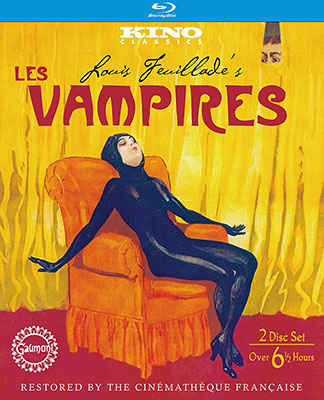 Kino Classics Kino Classics
2012 Blu-ray Disc edition
Les vampires (1915-1916), black & white and color-tinted black & white, 417 minutes, not rated.
Kino Lorber, K1012, UPC 7-38329-10122-0.
Two single-sided, dual-layered, Regions ABC Blu-ray Discs; 1.33:1 aspect ratio picture in pillarboxed 16:9 (1920 x 1080 pixels) 24 fps progressive scan image encoded in SDR AVC format at ? Mbps average video bit rate; DTS-HD Master Audio 2.0 stereo sound encoded at ? Mbps audio bit rate; English language intertitles, no subtitles; 40 chapter stops; standard two-disc BD keepcase in cardboard slipcase; $39.95.
Release date: 14 August 2012.
Country of origin: USA
Ratings (1-10): video: 7 / audio: 10 / additional content: 2 / overall: 7.
|
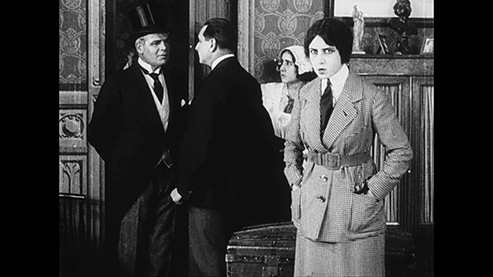
This Blu-ray Disc edition, licensed by Gaumont and produced for American home video by Bret Wood, has been mastered from the 1996 restoration by La Cinémathèque française, whose founder Henri Langlois championed the film for decades.
Here, on Blu-ray Disc, we see that the serial has not survived in the best state as the source material isn’t among the sharpest prints of the period. Image detail is average in the majority of the footage, which is generally composed of a broad range of greytones and slightly below average image detail, while it is a contrasty and grainy compromise in other sections of footage. In some contrasty shots, eyes, nostrils and lips float in a face of total white. Often, the resolution of Blu-ray Disc exceeds the image quality of the surviving material. Still frames nearly represent the restoration prints film-grain-by-pixel. But, that being said, the viewing experience still remains very good and give us the best representation on home video of the quality of the surviving prints of Les vampires. The difference in visual quality between Kino’s Blu-ray Disc edition and their DVD edition is significant when viewed on HD equipment.
This presentation is accompanied by a wonderful music score by The Mont Alto Motion Picture Orchestra. Well arranged and performed, the music adds texture and pacing to this atmospheric thriller. We now prefer this music score and performance to others for Les vampires released on home video.
Highly recommended to those who own a Blu-ray Disc player and HD monitor, this is the best-looking of all home video editions of Les vampires — far surpassing the original DVD edition from Waterbearer Films released in 2000, which is noted below.
|
|
This Region A Blu-ray Disc edition is available directly from . . .
|

|
|
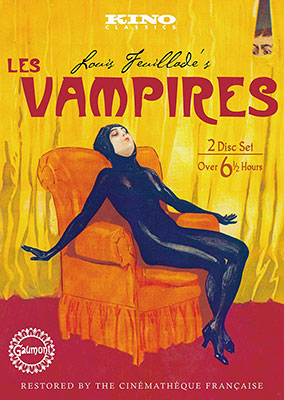 Kino Classics Kino Classics
2012 DVD edition
Les vampires (1915-1916), black & white and color-tinted black & white, 417 minutes, not rated.
Kino Lorber, K1011, UPC 7-38329-10112-1.
Two single-sided, dual-layered, Region 1 NTSC DVD discs; 1.33:1 aspect ratio picture in full-frame 4:3 (720 x 480 pixels) interlaced scan image encoded in SDR MPEG-2 format at ? Mbps average video bit rate (capable of progressive scan upscaling to ? fps); Dolby Digital (AC3) 2.0 stereo sound encoded at ? Kbps audio bit rate; English language intertitles, no subtitles; chapter stops; standard two-disc DVD keepcase in cardboard slipcover; $34.95.
Release date: 14 August 2012.
Country of origin: USA
Ratings (1-10): video: 6 / audio: 10 / additional content: 2 / overall: 7.
|
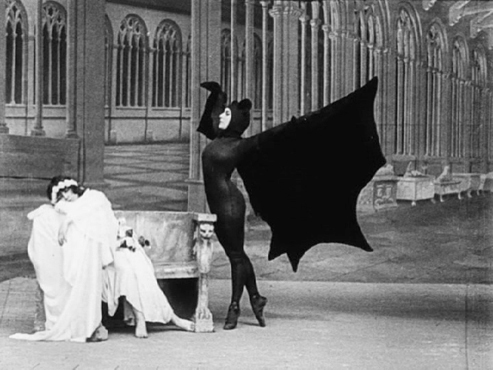
This DVD edition, licensed by Gaumont and produced for American home video by Bret Wood, has been mastered from the 1996 restoration by La Cinémathèque française, whose founder Henri Langlois championed the film for decades.
Here, we see that the serial has not survived in the best state as the source material isn’t among the sharpest prints of the period. Image detail is average in the majority of the footage, which is generally composed of a broad range of greytones and slightly below average image detail, while it is a contrasty and grainy compromise in other sections of footage. In some contrasty shots, eyes, nostrils and lips float in a face of total white. On DVD, with its lower resolution and higher video compression, the image quality approaches that of a very-good 16mm reduction print. But, that being said, the viewing experience still remains very-good and give us a fair representation on home video of the quality of the surviving prints of Les vampires.
This presentation is accompanied by a wonderful music score by The Mont Alto Motion Picture Orchestra. Well arranged and performed, the music adds texture and pacing to this atmospheric thriller. We now prefer this music score and performance to others for Les vampires released on home video.
Recommended to those who own a DVD player and a standard-resolution monitor, this is the best-looking DVD home video edition of Les vampires — surpassing (not surprisingly) the Waterbearer DVD edition from 2000 noted below.
|
This Region 1 NTSC DVD edition has been discontinued
and is . . .
|

|
|
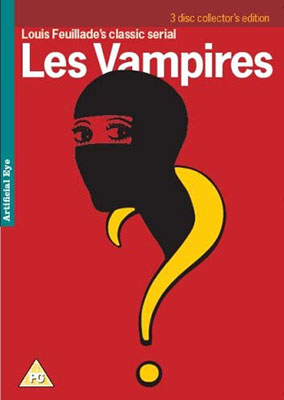 Artificial Eye Artificial Eye
2008 DVD edition
Les vampires (1915-1916), black & white, 339 minutes, BBFC Classification PG, with La Légende de la fileuse [The Legend of the Spinner] (1907), black & white, ? minutes, not rated, Une Dame vraiment bien [A Very Fine Lady] (1908), black & white, ? minutes, not rated, L’Orgie romaine [The Roman Orgy] (1911), black & white, ? minutes, not rated, C’est pour les orphelines [For the Children] (1917), black & white, 3 minutes, not rated, and Louis Feuillade at Work (1965), black & white, 32 minutes, not rated.
Artificial Eye, 364 DVD, unknown UPC number.
Three single-sided, dual-layered, Region 2 PAL DVD discs; 1.33:1 aspect ratio picture in full-frame 4:3 (720 x 576 pixels) interlaced scan image encoded in SDR MPEG-2 format at ? Mbps average video bit rate (capable of progressive scan upscaling to ? fps); Dolby Digital (AC3) 2.0 stereo sound encoded at ? Kbps audio bit rate; French language intertitles, optional English language subtitles; chapter stops; three slimline DVD keepcases in cardboard slipcase; £19.99.
Release date: 24 March 2008.
Country of origin: United Kingdom
|
|
This British PAL DVD edition of the serial is among the shortest presentations, likely transferred from 35mm source materials. Of concern is the shorter running time compared to other home video editions.
The presentation is augmented by a music score composed by Éric Le Guen and Chateau Flight. Supplemental materials include the documentary Louis Feuillade at Work (1965), and four short Feuillade films.
North American collectors will need a region-free PAL DVD player capable of outputting an NTSC-compatible signal to view this edition.
|
|
This Region 2 PAL DVD edition has been discontinued and is . . .
|

|
|
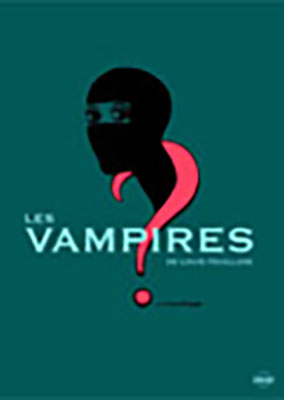 Gaumont Gaumont
2006 DVD edition
Les vampires (1915-1916), black & white, 420 minutes, not rated.
Gaumont, unknown catalog number, unknown UPC number.
Four single-sided, dual-layered, Region 2 PAL DVD discs; 1.33:1 aspect ratio picture in full-frame 4:3 (720 x 576 pixels) interlaced scan image encoded in SDR MPEG-2 format at ? Mbps average video bit rate (capable of progressive scan upscaling to ? fps); Dolby Digital (AC3) 2.0 stereo sound encoded at ? Kbps audio bit rate; French language intertitles, no subtitles; chapter stops; four-disc DVD keepcase in cardboard slipcover; €65.99.
Release date: 22 March 2006.
Country of origin: France
|
|
 This restored DVD edition of the French serial presents the most-complete version of the serial. This restored DVD edition of the French serial presents the most-complete version of the serial.
The film is accompanied by a music score, presumably composed by Éric Le Guen and Chateau Flight.
The supplemental material includes a documentary on Louis Feuillade (32 minutes), a featurette on the serial’s restoration (6 minutes), and a 32-page booklet.
North American collectors will need a region-free PAL DVD player capable of outputting an NTSC-compatible signal to view this edition.
|
|
This Region 2 PAL DVD edition has been discontinued and is . . .
|

|
|
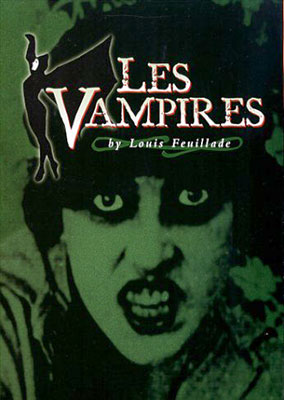 Waterbearer Films Waterbearer Films
2000 DVD edition
Les vampires (1915-1916), color-toned black & white, 399 minutes, not rated, with Bout-de-Zan et l’embusqué [Bout-de-Zan and the Shirker] (1915), black & white, 8 minutes, not rated, C’est pour les orphelines [For the Children] (1917), black & white, 3 minutes, not rated.
Waterbearer Films, distributed by Image Entertainment,
ID5960WBDVD, UPC 0-14381-59602-1.
One double-sided, dual-layered, Region 0 NTSC DVD disc (rereleased in 2005 on two single-sided, dual-layered, Region 0 NTSC DVD discs); 1.33:1 aspect ratio picture in full-frame 4:3 (720 x 480 pixels) interlaced scan image encoded in SDR MPEG-2 format at 4.5 Mbps average video bit rate (capable of progressive scan upscaling to 60 fps); Dolby Digital (AC3) 2.0 stereo sound encoded at 192 Kbps audio bit rate; English language intertitles, no subtitles; chapter stops; standard DVD keepcase (rereleased in standard two-disc DVD keepcase); $69.99 (rereleased at $39.98).
Release date: 16 May 2000.
Country of origin: USA
Ratings (1-10): video: 4 / audio: 9 / additional content: 6 / overall: 5.
|
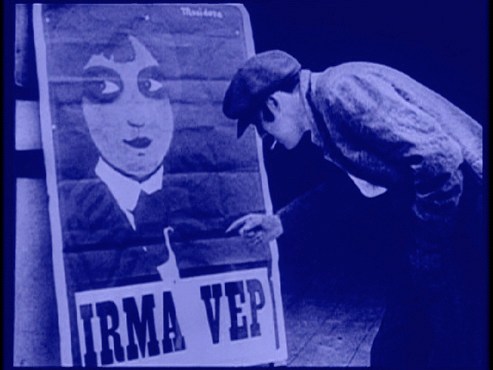
This DVD edition, produced by David Shepard in 1998, appears to have utilized a 35mm preservation print prepared from a compilation of footage from a very good 35mm print and a good 16mm reduction print. Many of the characteristics of early 16mm prints are here, including a contrasty greyscale range with slightly plugged-up shadow details and blasted-out highlights in several sections (during which facial features can be largely nonexistent). Other sections maintain a reasonable range of greytones and detail, and appear to originate from surviving (but not original) 35mm print elements. The preservation print or the video transfer has been flatly color-toned in several colors to keep what highlight details may remain in the print intact. The print is compromised by a few moments of distracting emulsion damage, and the picture does bounce about for a couple of minutes in chapter seven. The errors in the video production includes a moment when the master criminal Venomous tears the light switch from the wall in chapter nine and the color toning does not change to blue to signal the blinding darkness. Overall, the presentation appears to be largely intact and is quite watchable even when the prints are at their most contrasty (the worst that can be said of the source prints). Much of presentation is from very good 35mm materials and is reasonably clear and sharp. The video transfer has been compressed to an average 4.5 megabytes per second to accomodate the very long program (well over six hours) onto two sides of a dual-layered DVD disc. However, the image quality is not perceptively compromised by the video compression.
The French intertitles have been translated into English by Fabrice Zagury, who wrote the seven-page essay contained in the package insert booklet, and they have been set in new video intertitles which we feel could have been set at a larger font size to make the text easier to read on smaller television monitors. The intertitles are sprinkled with a potentially confusing inconsistent spelling of proper names.
Not enough can be said about the monumental music score prepared for Les vampires by Robert Israel and performed on piano with an ensemble. As always with Israel’s work, the score is entertaining and appropriate to the film’s action, and is well performed and well recorded. With nearly six hours of music to score, arranging this musical accompaniment was no mean task. It is a pity, however, that the musicians are not credited.
In the supplemental section, we have For the Children (1916) a segment from a larger compilation of films prepared by the French film industry to raise money for war orphans. The brief comedy features the Les vampires cast (3 minutes). The film has been transferred from an excellent though very speckled 35mm print. If only all of Les vampires could have survived in this condition. Also included is a one-reel comedy directed by Louis Feuillade starring child star Bout-de-Zan, who appeared in chapter eight of Les vampires. Bout de Zan et l’embusqué [Bout-de-Zan and the Shirker] (1915) features a story of a family that goes to a braggart’s home to witness his superior marksmanship. Bout-de-Zan discovers the man’s intended deception and swaps a stuffed animal for his ‘prey.’ An attached note reveals his plan and guilt-whips the man into enlisting in the army to fight the Germans (8 minutes). The film has been transferred from a very good 35mm print that is slightly contrasty.
|
This Region 0 NTSC DVD edition has been discontinued
and is . . .
|

|
|
|
Other FRENCH FILMS of the silent era available on home video.
Other SERIAL FILMS of the silent era available on home video.
Other silent film music scores by ROBERT ISRAEL available on home video.
|
|

LINKS IN THIS COLUMN
MAY TAKE YOU TO
EXTERNAL WEBSITES
•
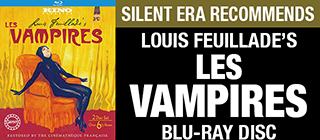
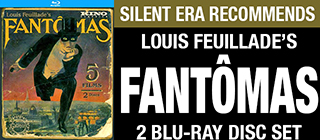
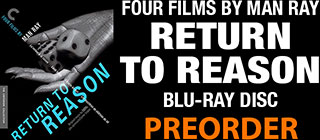
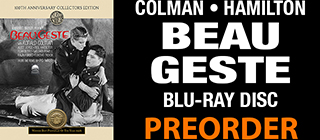


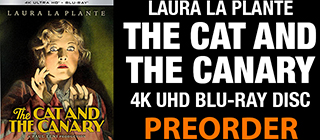


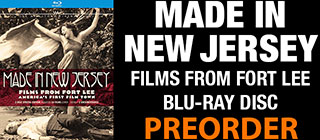

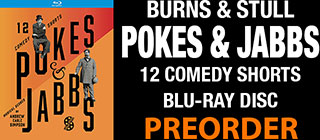


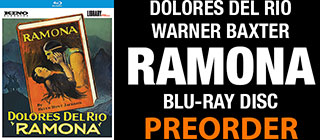
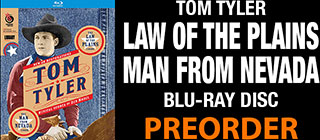
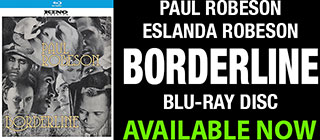
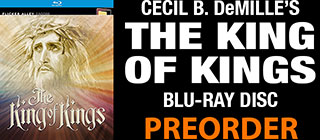
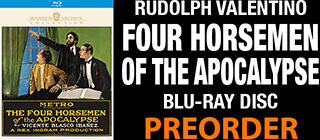
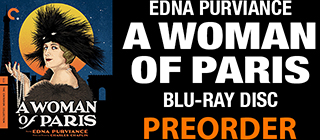
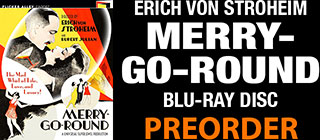

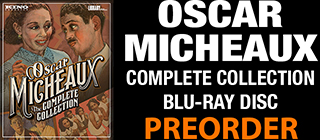
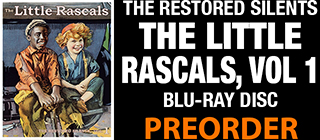
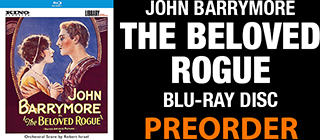

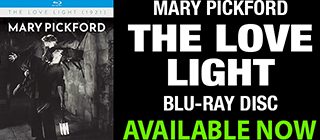
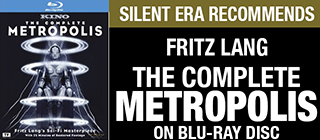



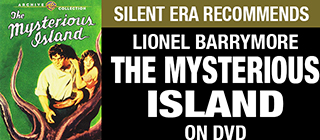

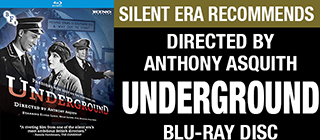
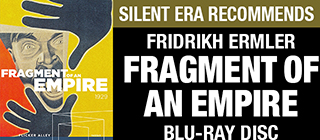
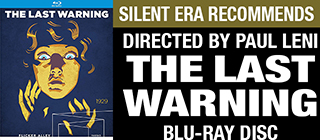
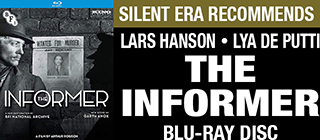
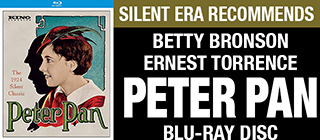
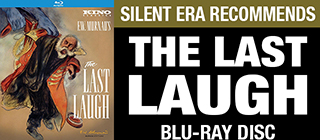
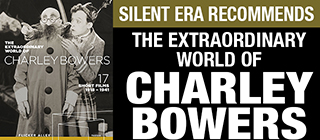
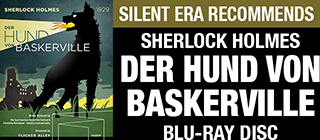

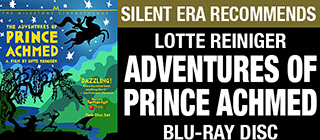
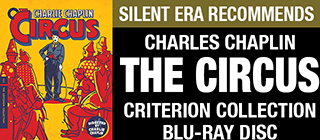
•
|




































